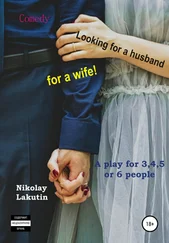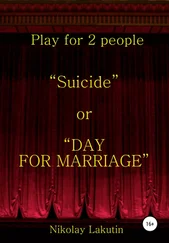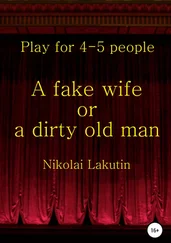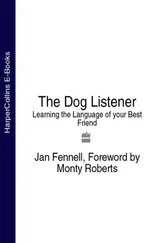The Join-Up moment is what any successful human conversation tries to achieve. It represents the coming together of two people, a meeting of the minds and of mutual respect and understanding. It advances the thought that I am happy to be with you and that I hope our time together will be one of mutual enjoyment. I place enormous importance on the fact that it is volunteered. With people, as with horses, I believe it is vital to achieve that same feeling of Join-Up. It is not possible to Join-Up when either participant feels pressure to accomplish it. It is not that we agreed to do it; it is that we want to do it.
Follow-Up is when I walk away from the horse after Join-Up. He will follow me only if he has a true desire to be with me. Horses have no ability to contrive. They simply cannot fake it. When I walk away, if he has any reticence about being with me, he certainly will not follow. Isn’t this similar to forming a close association with another person, nurturing that association and then waiting to see if your new friend makes any effort to come to you? If none is made, perhaps you need a bit more time to convince this individual that you have a meaningful role to play in his or her life. In my opinion, this is the same whether in business or personal relationships.
At the conclusion of a Join-Up session with a horse I make a point of doing something that is generally fun for both my audience and me. I take my horse to one side of the round pen, then run to the opposite side and ask my audience to applaud for the horse’s performance. The horse will virtually always perceive noise as frightening and will rush to be close to me. The crowd will at once realize that my horse has learned to seek a position near me when danger is perceived, thus validating my concepts.
I mentioned that during each of my Join-Up procedures I stroke the horse with both hands in what I call his vulnerable areas, those spots most often attacked by predators, then walk away. I do this to convince the horse that I intend him no harm. No predator walks away from its prey once it has access to the vulnerable areas. This builds trust. People are much the same, and while vulnerability may be either physical or psychological, you build trust when you are in a position where you could do harm but you don’t: the same is true when you protect another person from something you believe could be harmful. In turn, you know that if the same is done for you, it will increase your level of trust for the person involved. This gesture confirms the trust that began to develop at the first greeting. This trust-building tool is one of the most powerful in the world of commerce—the sharing of personal experiences between colleagues helps to create an environment in which people can work at a closer and more efficient level.
To further build this trust, I pick up each of the horse’s feet, hold it for a few seconds, put it down and walk away. The horses’ legs and feet are virtually their only weapons against predators. Their first choice is to flee using those powerful legs, but they will fight as a last resort. The strike of a front hoof or the kick of a back one can often mean life for the horse instead of death. When a horse chooses to allow me control of his hooves, he is in fact entrusting me with his weapons. Isn’t it true in the human spectrum that before we can go forward in a trust-based relationship, we are obligated to lay down our weapons? It isn’t until both parties feel no need for armament that we can truly work in unison.
The saddle pad corresponds in human terms to a tentative step toward shouldering first responsibility. The question asked of us might be: “Are you going to be responsible for your own decisions?” It is useful to find out how people will react to the idea of responsibility before it is given. For example: engagement before marriage, internship before becoming a practitioner and apprenticeship before achieving professional status.
The saddle continues the testing and accepting. It is literally about carrying responsibility; “being saddled with” describes the assignment of a task. Acceptance of the saddle is a metaphor for facing up to responsibility and accepting the responsibility of further challenges.
The bridle is used to guide the horse. Taking the bit between the teeth means, in human terms, to put energy into something, to be purposeful. The bridle is used for gentle guidance, not to control. If a horse wanted to do something, a bridle would not stop him. Among people, guidance—or the willing acceptance of guidance—suggests that a trust mechanism is in place and that one person is listening to another. The bridle represents purpose and direction based upon communication and trust. Cohesive direction and good communication create teamwork, which we rely upon to achieve shared goals.
The rider is the ultimate responsibility for the horse—a commitment akin to that of a partnership or marriage. The partnership of horse and rider represents the mutual acceptance of responsibility between employer and employee, teacher and student, husband and wife. Trust between horse and human can be seen when the two partners are relaxed and at peace together, where there is no force or stress involved.
It cannot be overemphasized that any violence will undo the processes I’ve just described above.
Join-Up is a tool, like a fine chisel. With it, you can carve a stable environment that enables communication. The tool must be used with skill, which may take years to perfect, but in its basic form Join-Up can be learned quickly.
It is, though, a procedure that must be precisely followed; there are no shortcuts. Each step is distinct and necessary. Join-Up may bring out conflict and perceived resistance or ambivalence. It is imperative that anyone using Join-Up be totally responsible for his own actions while allowing the other party to be responsible for his.
A raw horse that quickly accepts saddle, bridle and rider does so, in part, because he has been offered freedom of choice. The “trainer” simply moves through the process, keeping the conversation alive, always allowing the horse time to respond.
It is therefore response-based , not demand -based. You have to learn to open the doors of opportunity and be confident that Join-Up will work. You may have to wait until the horse responds favorably—the same holds true in human relationships.
Join-Up works at any stage of a relationship, whether a new one or one of long standing. It heralds an end to isolation by establishing bonding through communication. Join-Up is the result of deep communication in a shared language; it is a bond based on trust and marks the beginning of a fifty-fifty partnership, sustained through continued adherence to Join-Up’s principles and techniques. It is nonviolent, noncoercive and can only be achieved if both partners have willingly entered into the process. Join-Up means stepping into the other person’s world, by observing his or her needs, conditions, rules and by working within his framework and communicating in his language. It is not created by a particular environment, nor is it a formula to overcome an inability to communicate. It cannot be faked.
On the other hand, it can be formulated and taught; at heart it’s a simple process. Once you understand the formula, the path is clear to successful and mutually enjoyable conversation.
Follow-Up is the confirmation of Join-Up. With horses, this process allows the trainer to reestablish the trust bond. If the bond is not firm enough, the trainer simply goes back through the process until Join-Up is reestablished. Join-Up’s strength is its simplicity.
Join-Up is pivotal to a balanced existence, encouraging trust, reliability and comfort from others, but it can only occur when an underlying desire for partnership exists on both sides. My training provides a step-by-step guide to building a trust-based partnership, which is essential for horses and humans in order to eliminate violence.
Читать дальше












